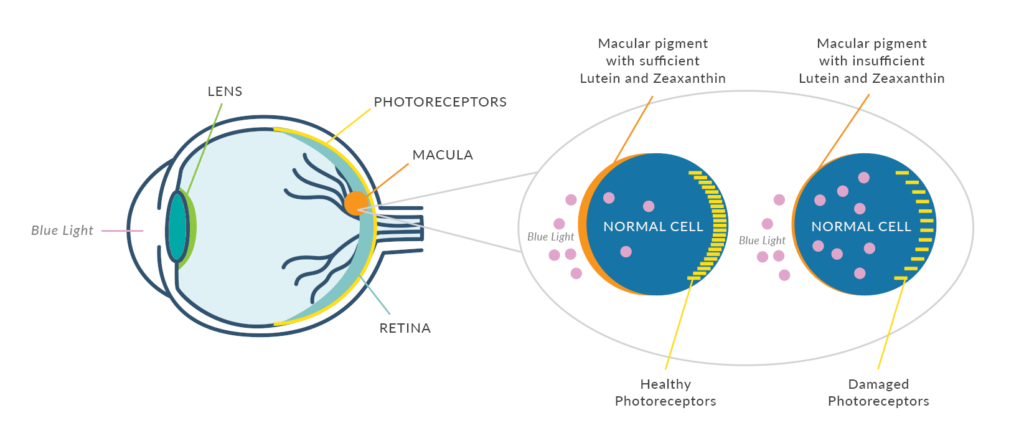Talking Screens for Back to School
Posted by amess on Aug 29th 2019
With school back in session, kids screen time will increase throughout the day. From 8+ hours doing school and homework to games and social media in the evenings, they’ll practically be glued to their screens. What effect can this have on their bodies? Science says a lot. MSN shared an article that warned, “Yes, [screens] can affect your child from head to toe, but the area you need to pay especially close attention to is their eyes.”
Symptoms to Watch for
Eye Strain
Eye strain is a common complaint among kids who spend 2+ hours on screens. The type of light emitted by screens (high-energy wavelength blue light) is more difficult for our eyes to focus on. Also, because we usually have our screens situated so close to our faces, our eyes have to make larger, more exaggerated movements to cover the screen. All these factors can contribute to the increased eye strain experienced by screen users.
Tired eyes
The exaggerated movement can also cause eye fatigue, another common complaint associated with screen time. Parents are often the ones to notice this symptom, remarking that their child’s eyes look tired. When people work on screens, there is often a need for sustained focus, which can also cause eye fatigue. These digital innovations are also so new, our eyes are not totally equipped to handling the amount of information they are getting.
Dryness
As mentioned in the MSN article, people tend to blink less, causing the eyes to dry out. Additionally, studies have shown that people don’t blink fully either, leading to lower quality blinks. What does this mean? It means that we’re not completely blinking, leaving our eyes without the lubrication they so desperately need. This dryness can cause burning sensations and irritation.
Headaches
The Vision Council conducted a survey that found that 9% of parents reported that their kids frequently suffered from eye strain and headaches due to screen time. What causes these headaches? Greg Bullock, marketing manager for glasses company Theraspecs, explains, “A combination of blue light, screen or device settings, and light intensity all can lead to eye strain [and headaches], even in a perfectly healthy child.”
Visual Changes/Damage
In a previous blog post, we talked about how some eye care professionals have seen an increase in nearsightedness in young people. One report found that the number of 13- to 16-year-olds who wear glasses in the U.K. has nearly doubled in the last 7 years, which they’re contributing to the increase in screen time. The type of light the screens emit has also been linked to accelerated cell death in the retina, which can lead to more problems down the road.

These digital screens are basically artificial suns we hold 5 inches from our faces, so it’s not surprising that they could be causing damage. However, there is evidence that the longer we’re exposed to this light source, the higher the probability of developing age-related eye health risks in the future.
Other Things Impacted by Screens
Screen time affects other functions of the body, too. Things like sleep cycles, mood, and attention spans can all be impacted. Read more in our screen time series.
What’s the Future Look Like?
These screens and their prevalence are too new to know the full impact, positive or negative, that they can have on the eyes and the body. Regardless, current trends show that people, specifically parents, are worried. You can offer them a proactive way to protect their children’s eyes. The article suggests children should wear protective lenses and have screen time limitations. EyePromise ® has an additional layer to add to their screen time protection plan.
A revolutionary eye vitamin designed for kids ages 4-17, EyePromise Screen Shield™ Teen protects the eyes from the ill effects of screen time. This one-a-day chewable eye vitamin delivers high-quality, dietary zeaxanthin and lutein plus other important vitamins to support their eye and overall health. Designed by a group of MDs and ODs, the formula is complementary to a daily multi-vitamin and certified by NSF International.
Starting the Conversation
Dr. Laquita Graham, a pediatrician, shared some of her protocols for talking screen time with parents.
“Any time you do a checkup, it’s recommended that you broach it with the patient and parents. Generally, I start incorporating questions about screen time for patients one year and older because families with children as young as two start using screens to pacify their children. I also focus my questions on screen time for children in their elementary years. With the emphasis on less homework in the evenings, kids are spending 3-4 hours a night in front of a screen.”
Here’s her advice for eye doctors specifically:
“Good nutrition and regular exams are important. Optometrists can tell patients that good nutritional choices promote the best vision possible, and they can ask patients to think about how long they are putting their bodies under physical stress through screen time usage. Eyes aren’t meant to look at screens for hours a day, and patients should think about limiting what they expect from their eyes and their bodies. It’s important for patients and parents to hear this message from multiple providers, so they recognize the importance of the screen time conversation.”
Order EyePromise Screen Shield Teen and start offering better protection from screen time.
